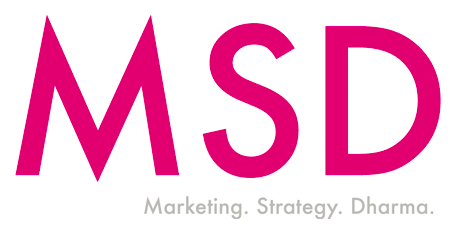Virtual reality has finally gone mainstream! VR offers new ways for content creators to tell a story and provides the audience with a more immersive, moving, and captivating experience. Every brand with a half decent technology/marketing department is now looking for ways to incorporate it into materials.
A still from McDonald’s VR Experience.
At the SXSW Festival, for example, McDonald’s partnered with HTC Vive to transport participants into a Happy Meal Box with white walls canvases for them to paint and customize themselves. Through the Vive’s controllers, one hand held the multi-colored paint wheel and the other, a shape-shifting paint gun. Budweiser took visitors on a virtual tour of Anheuser-Busch’s brewery in St. Louis. Budweiser included other sensory factors such as smell, touch and temperature to make the VR experience more real and engaging with the opportunity to sample the beer at the end. Gillette teamed up with Discovery to create the Gillette Clinical Clear Gel Pressure Chamber. Inside the chamber, participants took part in high-pressure activities such as canyon swinging and slacklining while being connected to wearable devices to track when their pressure spikes. The message behind this experience: Guys are constantly facing different obstacles every day, albeit most likely ones less intense. Gillette Clinical Clear Gel Antiperspirant will always help them to keep their cool.
Most users thoroughly enjoyed the experience. But does it always make sense to include VR in your campaign? Is it necessary? No.
MSD intern, Stephanie Yang, at Samsung 837.
I understand that it would be extremely fun to go canyon swinging as you’re sitting on a wobbling couch with goggles on as I, too, was able to experience first-hand what it is like to ride a rollercoaster using Samsung’s Gear VR at 837, the company’s flagship experiential center and cultural hub located in the heart of New York’s Meatpacking District. However, to connect it back to deodorant and razors is a bit of a stretch. Besides, VR can only do so much. While it may not be too difficult to simulate a city street or desert path or snowy tundra, extreme sports is quite a different ball game.
A still from virtual reality film, “Clouds over Sidra.”
Still, I do appreciate VR in other contexts as shown at last year’s Tribeca Film Festival. VR expert Chris Milk, along with filmmaker Gabo Arora, worked together with the United Nations to create Clouds Over Sidra, which follows a 12-year-old Syrian refugee within the intimate virtual recreation of Jordan’s Zaatari Refugee Camp. In this example, I would argue that VR helps viewers to experience a world we may never really be able to begin to fully comprehend otherwise. We may learn the facts of the situation, the circumstances that led the girl to the refugee camp, the amenities, dimensions of the living quarters, etc. but actually being there is such a completely different story. With the help of VR technology, you can hear and see and almost feel the starkness, helplessness, and desperation. It’s incredibly heartbreaking and eye-opening.
As the technology becomes more accessible and consumers express increasing interest, VR (and AR) will change the way we see and interact with the world around us. Still, this doesn’t mean we should invest without reserve. I imagine VR will do especially well in the nonprofit, community development, mental health, public health, gaming, and movie sectors. The VR headsets remind me of a scene in Colman Domingo’s recent comedy-drama “Dot” in which the mother has her son put on swim goggles and noisy headphones among other things to try to experience what it is like to live like she does, in her advanced age with Alzheimer’s. I would think a similar experience may be produced for other neurological illnesses.
As with all creative decisions, whether or not to use VR depends on whether or not it is relevant and effective. What are you trying to communicate and illustrate to your audience? Will using this newer technology add to the experience or muddle and distract from your message? Would filming with a GoPro camera suffice? Don’t blindly follow trends. Instead, do what makes sense for your brand.
I cannot wait to see and experience the ways different content creators use VR to tell a story in next month’s Tribeca Film Festival.
A still from “Notes on Blindness: Into Darkness.
Projects I’m most looking forward to include Notes on Blindness: Into Darkness by Arnaud Colinart, Amaury La Burthe, Peter Middleton, James Spinney.
After losing his sight in 1983, John Hull began recording an audio-diary documenting his discovery of “a world beyond sight.” John’s original recordings form the basis of this interactive experience, which uses real time 3D, virtual reality, and binaural sound to explore the interior world of blindness.
and a presentation by Stanford University’s Virtual Human Interaction Lab.
VHIL will host a three-part presentation comprised of: a demo geared towards promoting climate change that will put users near the bottom of the ocean to show how CO2 forms and destroys underwater reefs; an equality-minded VR experience that puts users in the bodies distinguished by different races, genders, and ages; and a sports training demo—one that’s been utilized by the Golden State Warriors and NBA commissioner Adam Silver, as well as included in the NFL Combine—aimed at giving festival goers the chance to feel like NBA all-stars and NFL quarterbacks.
For more information about the upcoming festival, tickets, and offerings, visit https://tribecafilm.com/festival/hub.
Dilys Zhu, MSD Intern





